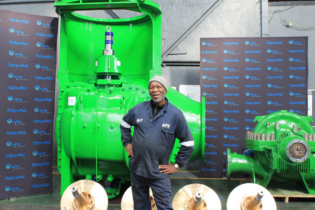By Frances Ringwood
Piloted in South Africa’s Western Cape Province as the Western Cape Industrial Symbiosis Programme (WISP) – coordinated by Green Cape and supported by a number of other statutory bodies including the Western Cape Government – a government-led system through which companies with complimentary production and/or waste streams are brought together for mutual benefit is being tested for Johannesburg business. After operating for five years, WISP has benefited only 14 Western Cape-based companies but the profits for those companies which are assisted could be potentially massive. Green Cape had its inspiration, training and guidance from a similar system set up in Britain under the banner of National International Synergies Programme (NISP), an organisation providing a web-platform for companies to log on, share what they do, where they’re located and what their waste streams are. NISP then pairs registered companies with other members which can reuse, beneficiate or add value to their waste streams or processes. All information shared under both the WISP and ISL systems is completely confidential of course, but some companies did return to both facilitating bodies to report on their partnership successes.Tomatoes and Nitrogen
One case study where industrial symbiosis proved to be extremely effective is when a farm licensed as John Baarda, and nitrogen and methanol producing firm Terra Nitrogen maximised land-use to cultivate tomatoes – a warm weather crop. “In South Africa you don’t need to pump heat through greenhouses to grow tomatoes because you already have a warm climate,” explains James Woodcock, international manager at International Synergies Limited. “Terra Nitrogen contacted NISP for assistance to reuse its by-products of carbon dioxide and steam. At the same time, existing NISP member and vegetable grower John Baarda was keen to expand its operations and produce sustainable quantities of product to supply leading retailers and supermarkets.“Facilitated by NISP, the successful synergy resulted in a record-breaking 38 acre greenhouse cultivating 300 000 tomatoes throughout the year for Sanisbury’s, using up 12 500 tonnes of CO2 as its primary source for plant grown,” says Woodcock.
Not only was there an environmental benefit to this case study, but there were also social spin-offs and financial gains for both parties involved. 80 new jobs were created and an additional £15-million was generated in private investment for the region. This is just one example of what NISP has achieved since it was started several years ago. To read about the dozens more synergies, go to their website: http://www.nispnetwork.com/.







